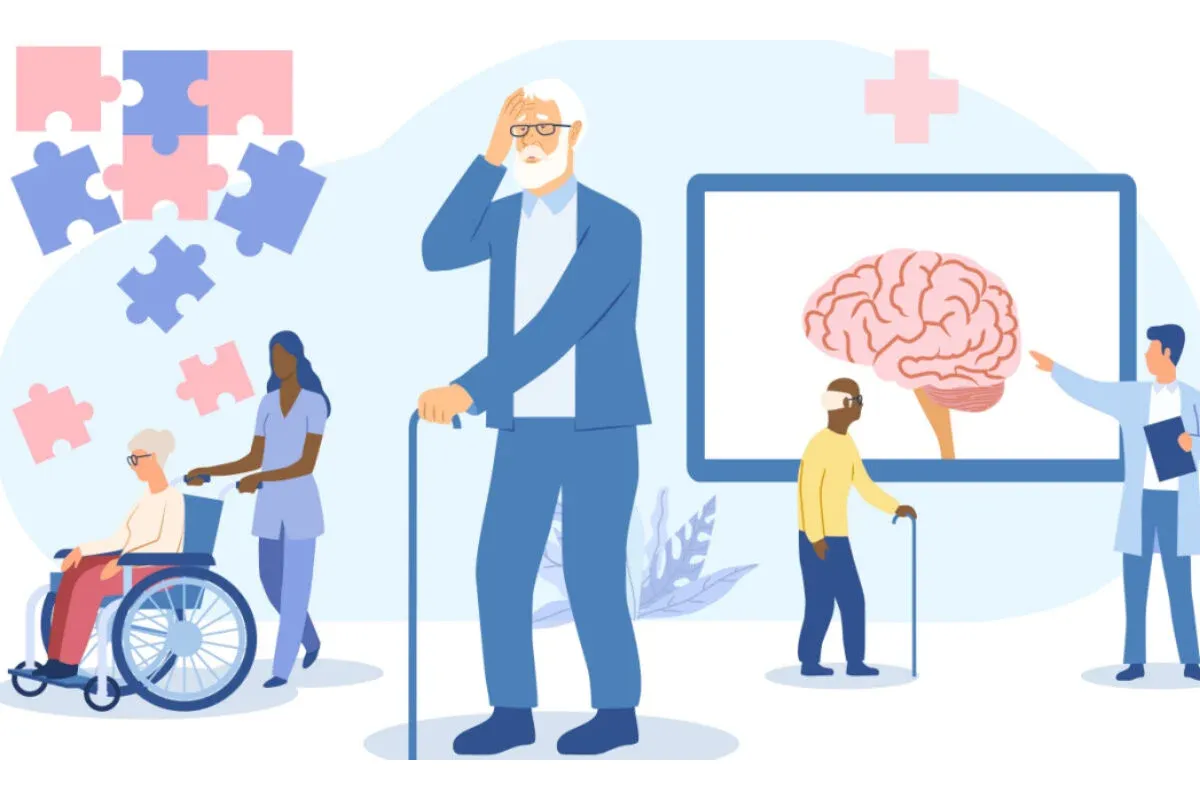Alzheimer’s disease: Researchers at the Massachusetts Institute of Technology (MIT) and Scripps Research have found a clue to the molecular aetiology of Alzheimer’s disease; this information may also explain why women are more susceptible to the disorder.
The brains of women who had died from the illness showed significantly higher levels of complement C3, an inflammatory immune protein, than those of men who had died from the illness, according to a study that was published on December 14, 2022 in Science Advances.
They also showed how this form of complement C3 is prevented from forming by naturally occurring oestrogen, whose synthesis decreases after menopause.
According to study senior author Stuart Lipton, MD, PhD, professor and Step Family Foundation Endowed Chair in the Department of Molecular Medicine at Scripps Research and a clinical neurologist in La Jolla, California, “our new findings suggest that chemical modification of a component of the complement system helps drive Alzheimer’s and may explain, at least in part, why the disease predominantly affects women.”
A team lead by Steven Tannenbaum, PhD, the Post Tenure Underwood-Prescott Professor of Biological Engineering, Chemistry, and Toxicology at MIT, collaborated on the project.
Also Read: UN: “Hosting Osama Bin Laden,” Jaishankar’s implicit criticism of Pakistan
Most typical type of dementia
Approximately six million people in the US alone are currently affected with Alzheimer’s, the most prevalent type of dementia that develops with age.
There is no recognised treatment that can stop the progression of the disease, much less reverse it, and it is always fatal, typically within ten years of commencement.
The medicines’ limitations are a reflection of the reality that researchers still don’t fully comprehend how Alzheimer’s disease arises.
Two out of every three are women
Additionally, scientists don’t fully understand why women make up nearly two-thirds of instances.
Lipton’s laboratory investigates biochemical and molecular processes, such as the chemical reaction that results in the formation of a modified form of complement C3, known as protein S-nitrosylation, which may be the cause of neurodegenerative disorders.
This chemical process, which produces a modified “SNO-protein” when a nitric oxide (NO)-related molecule attaches securely to a sulphur atom (S) on a specific amino acid building-block of proteins, was first found by Lipton and his coworkers.
Small clusters of atoms, like NO, frequently modify proteins in cells. These alterations typically activate or inactivate a target protein’s functions.
Because of technical difficulties, S-nitrosylation has received less attention than other protein modifications, but Lipton hypothesises that “SNO-storms” of these proteins may play a significant role in the development of Alzheimer’s disease and other neurodegenerative diseases.
Post-mortems
In the latest study, the scientists measured the amount of proteins changed in 40 postmortem human brains using brand-new techniques for identifying S-nitrosylation.
Each group was evenly split between males and females, and half of the brains came from people who had died from Alzheimer’s disease and half from persons who hadn’t.
The researchers discovered 1,449 distinct proteins that had been S-nitrosylated in these brains. Numerous proteins that have already been connected to Alzheimer’s disease were among those that were most often altered, including complement C3.
Surprisingly, female Alzheimer’s brains had levels of S-nitrosylated C3 (SNO-C3) that were more than six times higher than those of male Alzheimer’s brains.
Part of the human immune system with a longer evolutionary history is the complement system. The “complement cascade” is made up of a family of proteins, including C3, that can activate one another to cause inflammation.
Also Read: Iran expelled from UN Women’s Commission in a vote of 29 to 8; India abstains
Indicators of inflammation
For more than 30 years, researchers have known that, when compared to neurologically healthy brains, Alzheimer’s brains exhibit higher amounts of complement proteins and other inflammatory indicators.
Particularly, more recent studies have demonstrated that complement proteins might cause brain-resident immune cells known as microglia to attack synapses, the junctions through which neurons communicate with one another.
Loss of synapses has been shown to be a substantial correlate of cognitive decline in Alzheimer’s brains, and many researchers now speculate that this synapse-destroying mechanism at least partially explains the Alzheimer’s disease process.
Why would female brains with Alzheimer’s have a higher prevalence of SNO-C3?
The female hormone oestrogen has long been shown to have some brain-protective properties, thus the researchers proposed the hypothesis that oestrogen specifically protects women’s brains from C3 S-nitrosylation, and that this protection is lost when oestrogen levels drop abruptly with menopause.
This theory was validated by studies using cultured human brain cells, which showed that an enzyme that produces NO in brain cells is activated as oestrogen (b-estradiol) levels decline, leading to an increase in SNO-C3. This rise in SNO-C3 stimulates the microglial degradation of synapses.
Lipton says, “Why women are more likely to get Alzheimer’s has long been a mystery, but I think our results represent an important piece of the puzzle that mechanistically explains the increased vulnerability of women as they age.”
In the future, he and his colleagues want to test whether de-nitrosylating substances, which eliminate the SNO alteration, can lessen disease in animal models of Alzheimer’s and eventually in people.
Disclaimer: This material, including advice, provides general information only. It is in no way a substitute for a qualified medical opinion. Take the methods, and claims mentioned in this article as suggestions only; DNP India does not confirm or refute them. Consult a doctor before implementing any such suggestions/ treatment/medicine/diet.
Keep watching our YouTube Channel ‘DNP INDIA’. Also, please subscribe and follow us on FACEBOOK, INSTAGRAM, and TWITTER







